| Content | An 8-channel stereo summing mixer with 12AX7 tubes for sonic excitement, the Radial Space Heater can add incredible depth and harmonic richness to your tracks. Recording engineers at Sweetwater know that summing in the analog domain, as opposed to within your DAW, is a great way to get that big-console sound. The Space Heater's variable tube overdrive allows you to add everything from subtle transformer warmth to rich harmonic distortion. From gluing individual drum tracks into a cohesive kit to mixing down your final stems, the Radial Space Heater will add a great sound to your productions.
Tubes and transformers are just what your digital tracks need
No matter how well you record your tracks, or how you approach your mixes in your DAW, it's hard to beat the undeniably rich and deep sound that summing in the analog domain is known for. Instead of investing in a large analog console, a summing mixer like the Radial Space Heater is the perfect match for DAW-based studios. The transformer-coupled outputs add a touch of warmth, and variable tube overdrive is perfect for adding sparkle to vocals, depth to acoustic instruments, and even full-on distortion for extreme effects. Send your stems through the Space Heater, record the stereo mix back into your DAW, and you'll be impressed with the results.
Variable voltage for fine-tuning the tube sound
The Radial Space Heater not only gives you variable tube overdrive for each stereo input pair, but it also allows you to switch between 35-volt, 70-volt, and 140-volt operation. Use the 35-volt setting for maximum grit and distortion, or switch over to 70 volts for cleaner headroom and a smoother sound. When you want the cleanest headroom, switch over to 140 volts. You can adjust the voltage for each stereo input pair individually, which means you can add gritty overdrive to rock vocals while giving bass and drums tons of clean headroom for a deep, punchy sound.
Two useful studio tools in one
One look at the back panel tells you that the Radial Space Heater is ready to be a studio workhorse. Each of the eight channels can be set up as a hardware insert, which means you can send individual tracks through the Space Heater to add tube saturation and transformer warmth. Once your individual tracks are perfect and you're ready to sum your final mix, run your stems through the Space Heater and record the final stereo mix to your DAW. The Space Heater is effectively a smart combination of four outstanding tube/transformer modules plus an analog mixer.
Radial Space Heater 8-channel Tube Summing Mixer Features:
- Stereo summing mixer for adding warmth, depth, and harmonic richness
- A 12AX7 tube for each input pair lets you add anything from subtle sparkle to full-on distortion
- Transformer-coupled outputs add a touch of character while maintaining a high-quality, low-noise signal
- 3 adjustable voltage modes (35-volt/70-volt/140-volt) allow you to adjust how much clean headroom you have before distortion begins
- Use it as an analog summing mixer or as 4 individual tube saturation/transformer warmth modules
- Multiple units can be linked for higher channel count
| Heritage Audio's MCM-8 MK2 is an 8-slot 500 Series chassis with an integrated 10-channel summing mixer. The top-of-the-line MCM-8 MK2 features On Slot Technology that leverages next-generation power electronics to handle power supply on a per slot basis. Each slot has its own power supply linear regulation stages, isolating each module from the rest. Your modules simply share the metal enclosure. Each slot even has test LEDs for checking correct power operation. Dual-concentric potentiometers handle Volume and Pan for each slot, with pan pots being center detented for precise center positioning. Each channel is equipped with an On switch to assign it to the mix bus. MK2 improvements include a lower noise floor and the addition of a bypass switch for each slot that still lets you use the summing mixer functions. Heritage Audio has earned the respect of Sweetwater engineers, and the MCM-8 MK2 lives up to that sterling reputation.
Superb build and feature set
From its RAF blue-gray enclosure to the solid tactile feedback from its knobs and switches, the Heritage Audio MCM-8 MK2 unabashedly rocks vintage British Class A vibe. And just like the classic gear that inspires all Heritage Audio equipment, the MCM-8 MK2 boasts superb build quality and a very smart feature set. There's an additional stereo input on the back panel, which allows several MCM-8 MK2 units to be daisy-chained — or signals not needing further 500 Series processing to be mixed together. The central section sports analog VU meters and a Stereo Master fader. Gold-plated XLRs and DSUB25s handle the I/O.
Smart technology, superior sound
Thanks to Heritage Audio's On Slot Technology (OST), the MCM-8 MK2's power capability is a maximum of 400mA per rail, per slot — with an overall of 1.4A (1.6A non-continuous) per rail, whichever is reached first. Total available phantom power is 140mA. The mix bus has a passive voltage summing topology, similar to that found in Rupert Neve's 80 Series consoles of the 1970s. The gain loss is restored by the same Class A, 2n3055 driven, transformer-based output stage used in the Heritage Audio's modern-day version of the classic 1073. If you're not into specs, what this all means is that the MCM-8 MK2 is built right to give you many years of authoritative sonic performance and trouble-free use in your studio or on the road.
Heritage Audio MCM-8 MK2 Features:
- 8-slot 500 Series chassis with integrated 10-channel summing mixer
- NEW lower noise floor
- NEW bypass switch for each slot that leaves summing mixer functions enabled
- Mix bus with vintage Neve-style passive voltage summing topology
- Additional stereo input on the back panel allows several MCM-8s to be daisy-chained
- Central section sports analog VU meters and a Stereo Master fader
- Handles power supply on a per slots basis, isolating each module from the rest
- Gold-plated XLRs and DSUB25s handle your I/O
- 140mA total available phantom power
- Class A transformer-based output stage
- Solid build quality for many years of trouble-free use
| The Ultimate Desktop Mixer Legendary SSL studio tools redefined and streamlined
To the casual observer SiX looks like any other compact desktop mixer. Look a little closer and like all SSL consoles, SiX reveals a carefully considered feature set that is driven by an obsessive desire for total flexibility, to encompass every creative eventuality. It may be small but SiX is a classic SSL design. It carries the DNA of 40 years of true expertise in creative studio workflow. Listen to SiX and you will experience the impeccable sonic performance that is the hallmark of every SSL console. It is powerful and intuitive. Inspired and rewarding.
SiX is a condensed professional console for use in the studio, in post-production, on stage, and for podcasting. SiX offers big console sound and an impressive set of utility features in a format that is small enough to stick in a bag a go wherever you need it. SiX is stunning value; it offers two recording channels with SuperAnalogueTM mic pres, two band EQ, an essential one knob version of the classic SSL Channel Compressor, a new two-band Channel EQ, inserts and 100mm faders. There is a two-knob version of the legendary G-Series Bus Compressor on the main mix bus and the unique Listen Mic Compressor on the Talkback. In mixdown mode it is a very capable twelve channel summing system that offers analogue detail, depth and width to your mixes.
The SuperAnalogue™ Sound of SSL
SiX is an SSL SuperAnalogue™ design – it gives you the sonic signature of a large format SSL console on your desktop or in your backpack. Its signal path is fully balanced from front to back on everything except the headphone output. It delivers pristine, detailed audio with wide dynamic range, ultra-low noise, ultra-low distortion and superb imaging. If you want to know more about the technical reasons why SSL mixers sound so good read our document.
Two Recording Channels
SiX has two mono channels with SSL SuperAnalogue™ Mic’ Pre’s; these are transparent, fast and have a much wider available gain range than you would typically get on a compact desktop mixer – 66dB of gain compared to the more typical mid-40s or 50dB found in desktop mixers. They have phantom power, 75Hz high pass filter and an independent line-level input which can be switched to instrument level input with high impedance.
Moving down the channel strip we have a brand-new one knob compressor circuit. This design is based on and has the same sound as the classic SSL feed-forward Channel Compressor circuit. It has a program-dependent attack time, a fixed release time and fixed ratio. Simply adjust the threshold, watch the traffic lights flash to see how much compression is happening and rely on the circuit to automatically adjust gain to match input levels. This is a cool-sounding circuit that makes it simple to dial in a consistent level and get signals sitting right in the sweet spot.
Both mono channels have a new two-band SSL EQ that may be independently switched between shelf and bell curves, with different centre frequencies for each type. This approach draws upon the SSL design legacy of specifying response curves and centre frequencies for channel EQ that are immediately intuitively pleasing in their response; these curves and frequencies were selected by our team as the most “musically useful” for a wide range of sources.
SiX has 100mm faders. We spent some time working on alternate fader tapers and settled on a law that gave us the most control over the most useable gain range, making on-stage level control far easier than it would be with a rotary or a 60mm fader as found on other compact mixers.
Each channel has a fully balanced insert point for integrating other signal processors which is after the EQ and Compressor circuits, and like all SSLs the insert send is always active – meaning you can use this as a “dry” record send to your DAW if required.
At the bottom of the mono channels we have an ALTernate input switch which can source 2 extra mono channels from a connector on the rear of the console which can be used at mixdown.
Line Level Heaven
SiX has two stereo input channels with -10/+20 dB trim for line sources such as synthesisers, drum machines, output from soundcards etc. These have their own balance controls and 100mm faders. If only the Left input of a stereo channel is connected (and the right left free) the channel will automatically switch to mono, panned centre.
While SiX might be small it can handle a lot of inputs at mix-down! Using the two mono input and the two stereo input channels gives SiX its name, but we also have two stereo EXTernal inputs (with volume controls in the master section) which can be sent to the mix bus. Include the ALT inputs and we have up to 12 channels that can be summed into the main mix bus.
Master Bus Magic
SiX has a G Series Bus Compressor on the main mix bus. This uses the same circuit design as the legendary SSL Bus Compressor from our larger consoles but with a fixed ratio, attack, and release settings and a more modern quad-VCA chip. The simplified controls make it very easy to get that SSL glue and snap on whatever you push through your master bus. SiX also has a set of inserts on the main mix bus that can be used to bring external processing tools (like SSL Fusion) to your mixdown.
Routing Pro
SiX has a collection of professional routing & monitoring features taken directly from our large format console heritage. It has two Stereo Cue buses (with level and pan controls) for individual artist foldback mixes. The Master Section has main and alternate monitor outputs with a proper monitor source matrix, as well as mono check, dim and cut. The fader channels all have proper PFL and a Mute button that routes the muted signal to a ‘Bus B’. Bus B can be used as a convenient DAW record send but it can also be routed to the monitor matrix. This means that the muted signal can be monitored without it feeding the main mix bus and then switched in to the main mix with the Mute button – perfect for live webcasting because a remote feed can be monitored ‘offline’ and punched in to the broadcast feed. There is a talkback mic’ input with phantom power and SSL’s unique, crunchy Listen Mic Compressor, which of course also serves as a unique processing tool that delivers that classic 1980’s slammed drums sound.
Key Features:
A fully professional condensed console for use in the studio, in post-production, on stage, and for podcasting.
Benchmark SuperAnalogue™ audio performance
Ultra low noise : ultra-low distortion : pristine sound
Stunning Record Path
Two SSL console grade SuperAnalogue mic pre’s
Classic SSL Channel Processing
Essential versions of SSL Channel EQ and Dynamics
The unique Listen Mic Compressor
Nothing slams drums quite like it!
Professional Routing & Monitoring
The hidden versatility of truly professional features
12 Input Summing at Mixdown
12 line level inputs with channel and Master Bus inserts
Legendary Master Bus Compressor
An essential version of the incredible SSL legacy
Completely balanced signal path
Everything except the headphone jack is fully balanced | Add the undeniably vibrant sound of analog summing to your DAW with the SPL MixDream XP 16 x 2 analog summing mixer. Take one of your past projects and mix it through the MixDream XP and you'll hear more depth, enhanced stereo imaging, and noticeably punchier dynamic impact. The Class A design and 60-volt rails in the MixDream XP provide amazing headroom and ultra-low noise, rivaling the sound of full-featured analog consoles. Once you've got your submixes sounding just right, Sweetwater can highly recommend the SPL MixDream XP summing mixer to take your mix over the top.
SPL MixDream XP 16 x 2 Summing Mixer at a Glance:
- Deeper, wider mixes from analog summing
- Premium analog design for top-notch sound
- Expandable for higher channel counts
Deeper, wider mixes from analog summing
While the debate over analog vs. digital summing is not new, most engineers agree that summing your mix through high-quality analog gear sounds awesome. Compared to the exact same mix summed in your DAW, you'll notice that the SPL MixDream XP sums your mix with greater depth and enhanced stereo definition, with an undeniably vibrant quality.
Premium analog design for top-notch sound
SPL designed the MixDream XP summing mixer with 60-volt rails for an outstanding 125dB dynamic range, with a very low noise floor too.The discrete Class A topology was designed to give you essentially the same sound as a high-end mixing console, in a convenient rackmount form factor.
Expandable for higher channel counts
Need more than 16 channels of analog summing? It's easy to expand your summing capabilities with additional MixDream XPs. Just use the expansion inputs to daisy-chain your MixDream XPs, or even mix and match with SPL MixDream model 2384 summing mixers.
SPL MixDream XP 16 x 2 Summing Mixer Features:
- 16-in, 2-out analog summing mixer
- Amazing dynamic range and ultra low noise, thanks to discrete Class A design and 60-volt rails
- Multiple units can be linked for surround operation
- Allows you to achieve an analog vibe that's difficult to create with plug-ins
- Ideal for mixing and mastering applications
| The Dangerous Music Liaison puts the fun back into trying out creative combinations of gear. The Liaison also lets your setup remain absolutely flexible — just what you need if you want to survive in a market that often demands recording, mixing, and mastering services from a single studio. The Liaison's claim to fame is that it combines your favorite pieces of music gear together in various configurations, allowing you to try out new gear combinations and recall them later. But there's a lot more to the Dangerous Music Liaison than mere signal routing.
Mix, match, store, and recall all your favorite gear combinations
Dangerous Music has always been dedicated to providing serious engineers with the most useful gear possible. They've upped the ante again, with the Liaison. The Liaison lets you experiment with different combinations of gear, giving you a total of six discrete 2-channel inputs and two 2-channel buses. Want to hear how that compressor sounds pre- and post-EQ? With a Liaison, you can audition various hardware combinations as easily as swapping around plug-ins in a DAW. What's more, you can store and recall your favorite setups, so you can keep that killer vocal compression chain or that thumping kick drum processing path close at hand.
Flexible stereo buses give you advanced configuration options
When we ran the Dangerous Music Liaison through its paces here at Sweetwater, we found that its stereo buses do more than just compare two discrete signal paths. Depending on how you configure them, these stereo buses can provide you with two completely independent, flexible signal chains, each serving as its own small routing matrix. You can also combine both buses to create a long and flexible continuous signal-processing chain, in which you can reorder entire sections of your gear setup. Even cooler, you can use the Liaison's buses to establish complex parallel signal processing — opening up limitless sonic possibilities.
Mastering-grade components for unrivaled sound quality
As is the case with all Dangerous Music products, the Liaison is made entirely from mastering-grade components, so you never have to worry about audio coloration or latency. In fact, when set to simply pass audio, professional grade testers used to measure the Liaison read as though they were plugged into themselves. Talk about quality control! Here are some of the other specifics. Both the inserts and the buses feature straight-wire, unamplified, balanced signal paths. All audio is relay-switched via top-quality, gas-filled, bifurcated contact relays — ensuring that all switching is absolutely noiseless. The rest of the Liaison's signal paths feature mastering-grade components made by THAT Corp. and Burr-Brown.
What the pros are saying about the LIAISON:
- "The Dangerous LIAISON feels like engaging light-speed for my workflow...and make no mistake: workflow IS sound. The sheer speed at which you can do critical comparisons of entire signal chains does have a direct and positive impact how your music will sound." — Alberto Rizzo Schettino (Engineer)
- "One of the best features of the LIAISON is the monitor outs...you can monitor the signal at four points in the chain: before and after Bus A and B. The usefulness of this feature is huge, and Dangerous deserves major props for including it! The switching of inserts is managed by beefy relays that are as transparent as any I've ever heard." — Adam Gonsalves (Mastering Engineer)
- "LIAISON gives you the impetus to rethink how you record, mix, and master your music...[and] using the LIAISON is dead simple. I think of LIAISON not as an insert switcher, but as a creativity enabler." — Andy Hong (Writer/Reviewer)
- "The Dangerous LIAISON is incredibly exciting. To have a device that lets you so easily switch between processors, swap the order of processors, do quick A-B comparisons of signal chains. It makes my work better!" — Jonathan Wyner (Mastering Engineer)
- "Being able to switch devices from one bus to the other is extremely useful. The fast switching is amazing!" — Jeff Lipton (Mastering Engineer)
- "The LIAISON is really important — I can do a lot of combinations of chaining gear and I am able to work a lot faster. Before the LIAISON [I had to] switch the patchbay and compare the sounds. Now I am 20-times faster than before, I like the way the LIAISON allows me to still be in the energy of the music. — Antoine "Chab" Chabert (Mastering Engineer)
- "So happy with the LIAISON. Being able to switch gear in and out from the listening position without leaning over a patch bay is fantastic. After sitting in this chair for so many years, it actually improves my mixing ergonomics considerably." — Bob Power (Mastering Engineer)
Dangerous Music Liaison Features:
- Flexible signal routing matrix that allows you to combine the gear in your studio in fun, exciting, and creative ways
- Leverage all your gear, all the time
- Improve your tracks, mixes, and masters by auditioning and marrying the perfect ensemble of equipment
- 2 independent stereo buses mean you can set up 1 as a tracking path and the other as a mix path, without repatching, or chain them together
- Separate parallel processing loop to let drums breathe and crush simultaneously
- Create complex combinations of gear and A/B instantly
- Store your favorite settings to recall any tracking, mixing, or mastering configuration
- 6 stereo insert loops, assignable to 2 stereo buses
- Mastering-grade components ensure silent, relay-based switching and color-free audio
| KORG MW 2408 MIXER MIXER |




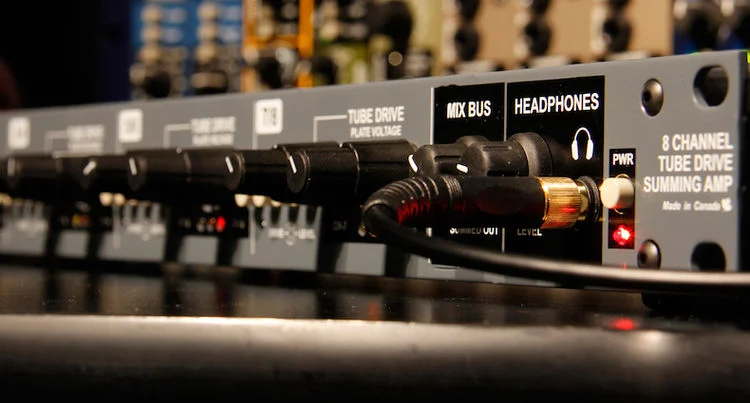






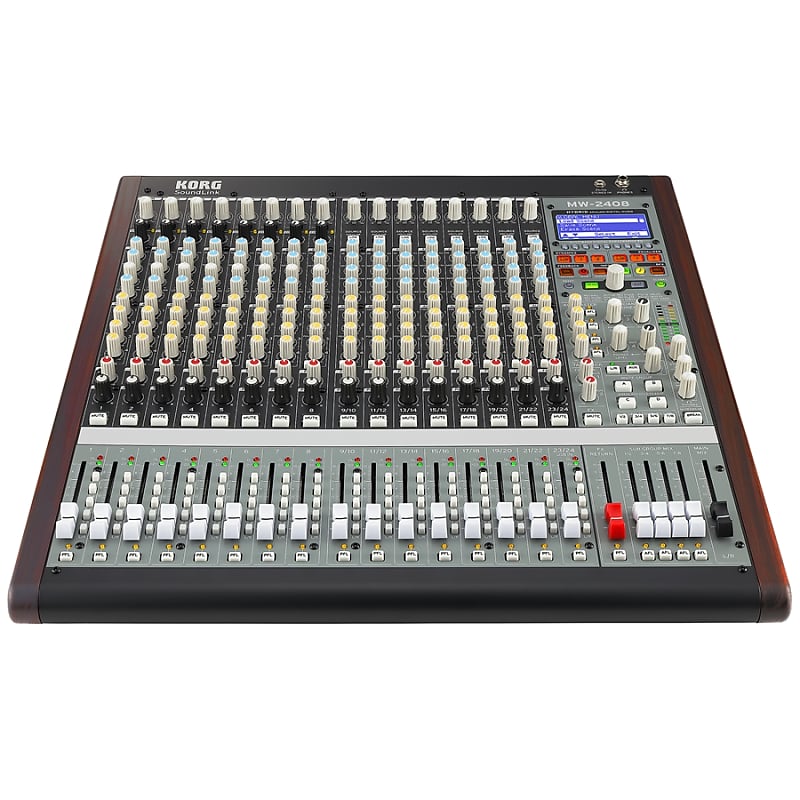
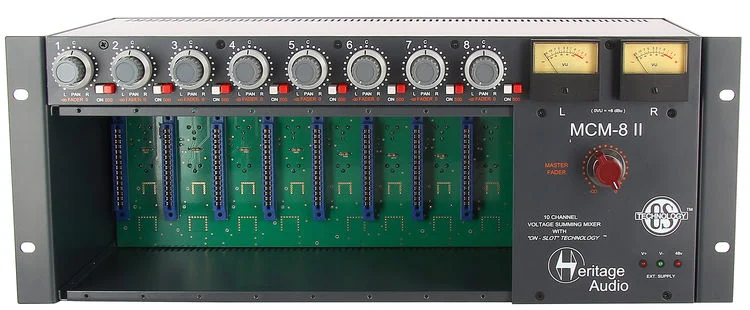

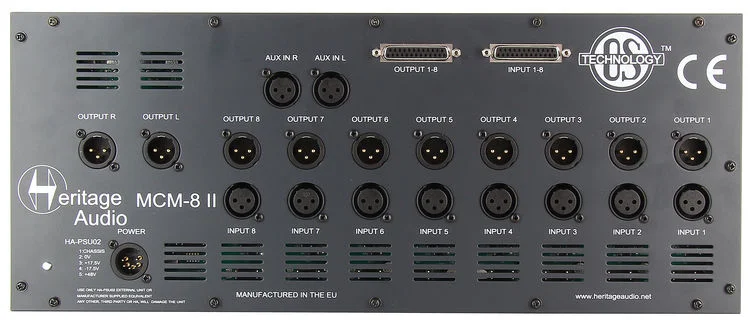









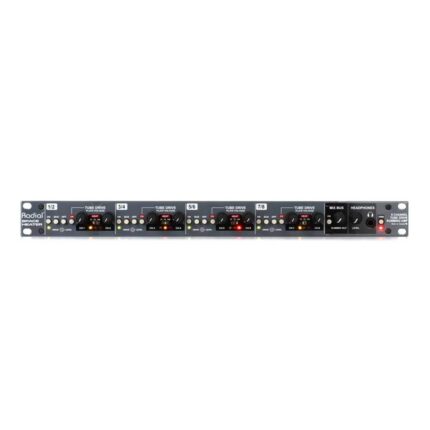
Reviews
There are no reviews yet.